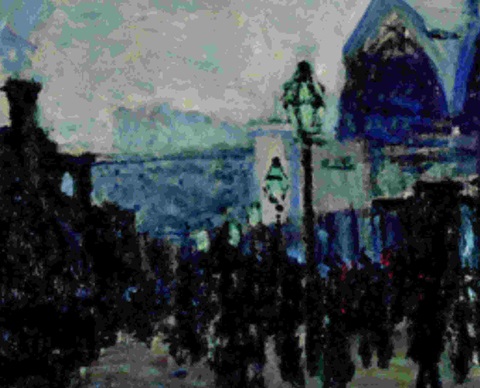The Magnificent Variations of Claude Monet: His Series of 12 Works on the Gare Saint-Lazare
Claude Monet
La Gare Saint-Lazare
En 1877
H. 54,3 ; L. 73,6 cm.
The National Gallery, Londres, Royaume-Uni
This painting is part of the series of twelve works that Monet dedicated to the Gare Saint-Lazare in early 1877. Having a familiarity with this station since his childhood, Monet chose to depict this place, which was also the starting point for many key sites of Impressionism in western Paris.
Among the four paintings Monet made inside the station itself, this one is considered one of the less finished but also the most freely painted. The artist positioned himself at the terminus of one of the main lines, offering a bird's-eye view of the platforms. In the foreground, two locomotives are enveloped in steam, surrounded by passengers likely waiting to board.
The dark and angular lines of the roof beams contrast with the random patterns formed by the steam and smoke. By including the closed roof at the top of the image, Monet breaks with traditional landscape conventions. The light and clouds that would typically be associated with an open sky are captured within a decidedly modern structure made of glass and iron.
By reinterpreting the scene of the Gare Saint-Lazare, Monet explores the contrasts between the old and the new, nature and industry. His bold and innovative representation of this emblematic space of modernity highlights the characteristic elements of Impressionism, such as the play of light, atmospheric effects, and spontaneity of brushwork.
This artwork thus bears witness to Monet's unique vision and his desire to push the boundaries of artistic representation by capturing the essence of the Gare Saint-Lazare in all its modernity.

